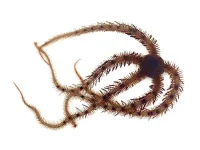(Press-News.org) Actively monitoring abnormal cells (lesions) that line the cervix rather than removing them straight away is associated with an increased long term risk of cervical cancer, suggests a study published by The BMJ today.
The researchers stress that the absolute risk of cervical cancer remains low, but the results show that compared with immediate treatment, active surveillance was associated with a nearly fourfold higher risk of cervical cancer 20 years after diagnosis.
Cervical intraepithelial neoplasia (CIN) refers to abnormal changes of the cells that line the cervix. CIN is divided into grades - CIN1, 2 or 3. The higher the number, the more severe and the higher the risk of progression to cancer is.
CIN is not cancer, but abnormal cells can develop into cancer if left untreated. For many years, CIN2 has been the threshold for treatment to remove abnormal cells. However, several studies have shown that 50-60% of CIN2 cases spontaneously regress within two years.
As a result, many countries have implemented active surveillance as an option for some women with CIN2, but it’s not clear whether this approach is associated with increased risk of cervical cancer in the longer term.
To address this, researchers in Denmark set out to assess the long term risk of cervical cancer in women having active surveillance for CIN2 compared with immediate treatment.
Active surveillance has been an option for all women of reproductive age in Denmark since 2013 and in some Danish regions since 1995. It involves regular examinations and tests for two years after diagnosis to see if the abnormal cells develop further.
The study included 27,524 women with CIN2 diagnosed in 1998-2020 and aged 18-40 years at diagnosis. Of these, 12,483 (45%) had active surveillance and 15,041 (55%) had immediate treatment with large loop excision of the transformation zone (LLETZ) to remove lesions.
Women were followed from diagnosis until cervical cancer, hysterectomy, emigration, death, or 31 December 2020, whichever came first.
After taking account of various factors including age, calendar year, and region of residence, the researchers identified 104 cases of cervical cancer - 56 (54%) in the active surveillance group and 48 (46%) in the LLETZ group.
The cumulative risk of cervical cancer was similar across the two groups during the two-year active surveillance period (0.56% in the active surveillance group and 0.37% in the LLETZ group).
Thereafter, the risk increased in the active surveillance group. After 20 years, the risk was about fourfold higher in the active surveillance group (2.65%), whereas it remained relatively stable in the LLETZ group (0.76%). The increased risk was mainly seen among women aged 30 or older.
One explanation for the higher long term risk of cervical cancer in women having active surveillance could be that the underlying HPV infection that causes cervical cancer remains dormant in the cells with subsequent risk of reactivation during periods of weakened immune or increasing age, say the researchers.
This is an observational study, so can’t establish cause, and the researchers acknowledge that variation in CIN2 diagnosis and a lack of information on several factors including socioeconomic status and number of biopsies in the active surveillance group may have influenced their results.
Nevertheless, this was a well designed study that used individual level data from high quality nationwide registries with virtually complete follow-up, suggesting that the findings are robust.
As such, the researchers say their findings “are important for clinical counselling of women with CIN2 and suggest a need for increased follow-up in women with a history of active surveillance.”
END
Actively monitoring cervical lesions linked to heightened long term risk of cervical cancer
Absolute risk of cervical cancer remains low, but results show importance of regular checks for women having active surveillance
2023-11-30
ELSE PRESS RELEASES FROM THIS DATE:
Internet is fuelling new wave of misogyny, says linguistics expert
2023-11-30
Society has gone backwards in its treatment of women with the internet fuelling new forms of misogyny, according to the author of a new book.
Linguist and researcher Deborah Cameron says that prejudice, discrimination and abuse should not be regarded as yesterday’s problems. Rather than fading away in the twenty-first century, they have evolved in ways that reflect today’s conditions, her research suggests.
Her book Language, Sexism and Misogyny analyses the way sexism and misogyny are expressed today in advertising and media, drawing on evidence from academic research to provide a comprehensive ...
World’s largest genetic project opens the door to new era for treatments and cures: UK Biobank’s major milestone
2023-11-30
In a momentous landmark for medical research, UK Biobank has today [Thursday 30 November] unveiled incredible new data from whole genome sequencing1 of its half a million2 participants. This is set to drive the discovery of new diagnostics, treatments and cures and, uniquely, is available to approved researchers worldwide, via a protected database containing only de-identified data (e.g. name, address, date of birth, name of GP and more stripped out). This abundance of genomic data is unparalleled, but what cements it as a defining moment for ...
Brittle stars can learn just fine -- even without a brain
2023-11-30
DURHAM, N.C. -- We humans are fixated on big brains as a proxy for smarts. But headless animals called brittle stars have no brains at all and still manage to learn through experience, new research reveals.
Relatives of starfish, brittle stars spend most of their time hiding under rocks and crevices in the ocean or burrowing in the sand.
These shy marine creatures have no brain to speak of -- just nerve cords running down each of their five wiggly arms, which join to form a nerve ring near their mouth.
“There's no processing center,” ...
How can adults with congenital heart disease reduce risks? Study finds lifetime cardiology monitoring is key
2023-11-30
Heart failure is a potentially urgent health concern for young adults with congenital heart disease (ACHD) that is often overlooked and undertreated, even as hospitalizations for this condition continue to rise. New research from Mayo Clinic shows that young adults in the U.S. living with congenital heart disease are at an increased risk of death or cardiovascular complications after being hospitalized for heart failure. However, study data published in the Journal of the American Heart Association also found that patients who had been receiving recent cardiology care before a heart failure hospitalization were less likely to die.
"More than ...
Parsing the puzzle of nucleon spin
2023-11-30
NEWPORT NEWS, VA – Alexandre Deur has spent his career studying the mystifying spin structure of the nucleon — which is also one of the primary missions of the U.S. Department of Energy's Thomas Jefferson National Accelerator Facility, where Deur has been a staff scientist for nearly 20 years.
A particle’s spin is one of its basic characteristics, like its mass or electric charge, and physicists have long tried to nail down the dynamics at work behind the spin of particles made of quarks, like the proton, or what they call the “spin ...
Disc around star observed in another galaxy for the first time
2023-11-30
Astronomers have uncovered evidence of a rotating disc of material circling a massive young star in a nearby galaxy for the first time. Megan Reiter, assistant professor of physics and astronomy at Rice University, was part of the team of researchers who announced their discovery in a study published in Nature.
“This is strong evidence that high-mass stars, which are several times bigger than the Sun, form in the same way as lower-mass stars,” Reiter said. “That’s been a big question for a long time.”
Located in a galaxy neighboring ...
Are you at risk for diet-related disease? Where you spend your day plays a role
2023-11-30
How many fast-food joints do you come across throughout your day and what does that have to do with your health? A lot, says Abigail Horn, a lead scientist at USC’s Information Sciences Institute (ISI).
Horn led a multidisciplinary team that included researchers from three USC schools (Viterbi School of Engineering; Dornsife College of Letters, Arts and Sciences; and Keck School of Medicine), MIT, and Sabancı University in Turkey; and worked in collaboration with the LA County Department of Public Health. They set out to ascertain whether smartphone mobility (i.e., location) data could provide a way to measure people’s ...
Harvard report proposes comprehensive plan for Lebanon’s economic recovery
2023-11-30
Harvard's Growth Lab has released a new report on Lebanon's struggling economy that revisits the origins of the crisis and proposes a comprehensive plan for a swift economic recovery. The research project, led by Professors Ricardo Hausmann, Ugo Panizza, and Carmen Reinhart, provides a clear diagnostic of the ongoing crisis and suggests novel, out-of-the box solutions.
The research highlights the unusual depth of Lebanon’s economic collapse. According to Professor Hausmann, “Lebanon faces a triple financial crisis: its currency has collapsed, its banking system is bankrupt, and the government has defaulted on its debt. The ...
Substance abuse treatment helps reduce reported methamphetamine use among men who have sex with men
2023-11-30
A nearly decade-long study by UCLA researchers found that substance abuse treatment of any kind may help to reduce methamphetamine usage among men who have sex with other men – a population that has been disproportionately impacted by the U.S. methamphetamine crisis in recent years.
The findings come from the mSTUDY, funded by the National Institute on Drug Abuse (NIDA), and are published in the Journal of Substance Use and Addiction Treatment. The study analyzed responses from a group of nearly 300 men in Los Angeles who self-reported ...
Community scientists needed: help improve winter weather predictions
2023-11-30
Community members across Utah, the Great Basin, and around Lake Erie and Lake Ontario are invited to join people across the country in contributing winter weather observations. The data is collected by scientists for a NASA-funded project that seeks to improve the accuracy of winter weather predictions.
Information collected by community scientists will help researchers from Lynker, DRI, and the University of Nevada, Reno, improve the technology that drives predictions for when precipitation will fall as rain or snow. Currently, satellite technologies struggle to differentiate snow from rain near the freezing point in mountainous ...
LAST 30 PRESS RELEASES:
Kennesaw State University’s Jerry Mack named Paul “Bear” Bryant Newcomer Coach of the Year
Ancient teeth are treasure troves of data on Iron Age lifestyles
Avocados may become easier to grow in India—but not if global emissions remain high
Pregnant women with IBD show heightened inflammation in vaginal mucosa
Underwater photos show seabirds, seals and fish interacting with a tidal turbine in Washington State
1 in 5 surveyed UK adults who have experienced the death of a pet report it as more distressing than experienced human deaths, with significant rates of prolonged grief disorder symptoms also being re
Polyester microfibers in soil negatively impact the development of cherry tomato plants in experiments, raising concerns over the potential effect of high levels of such contaminants
LGBTQ+ adults may be around twice as likely to be unemployed or to report workforce non-participation compared to heterosexual adults, per large representative Australian survey
Horses can smell fear: In experiments where horses smelled sweat from scared humans, they reacted to scary and sudden events with increased fear and reduced human interaction
New synaptic formation in adolescence challenges conventional views of brain development
Scientists identify target to treat devastating brain disease
Oliver Zielinski selected as Fellow of The Oceanography Society
Has progress stalled on gender equality at work?
Quantum simulator sheds light on how nature moves energy in systems like photosynthesis and solar conversion
Can a hashtag help prevent atrocities? Study shows social media can be a powerful tool
The American Ornithological Society (AOS) announces the winner of the 2025 Wesley Lanyon Award
Woolly rhino genome recovered from Ice Age wolf stomach
An earthquake on a chip: New tech could make smartphones smaller, faster
New research shows how AI tools are expanding individual capabilities while contracting scientific attention
A nanomaterial flex — MXene electrodes help OLED display technology shine, while bending and stretching
Global research team uncovers mechanism by which metabolites guide cellular decisions
Work hours, stress, and burnout among resident physicians
Quality of life of parents of premature infants
Should younger and older people receive different treatments for the same infection?
Scientists discover how fast the world’s deltas are sinking
Scientists demonstrate first-time use of AI for genetic circuit design
Copenhagen researchers make the front page of Nature: Solving the mystery of the universe's ‘little red dots’
Seoul National University-Drexel University team achieves world's highest efficiency fully stretchable OLEDs with 17% external quantum efficiency
Hydrogel cilia set new standard in microrobotics
Application of orthogonal CNOP-I in a convection-allowing ensemble prediction system based on CMA-MESO for improving extreme precipitation skill
[Press-News.org] Actively monitoring cervical lesions linked to heightened long term risk of cervical cancerAbsolute risk of cervical cancer remains low, but results show importance of regular checks for women having active surveillance



